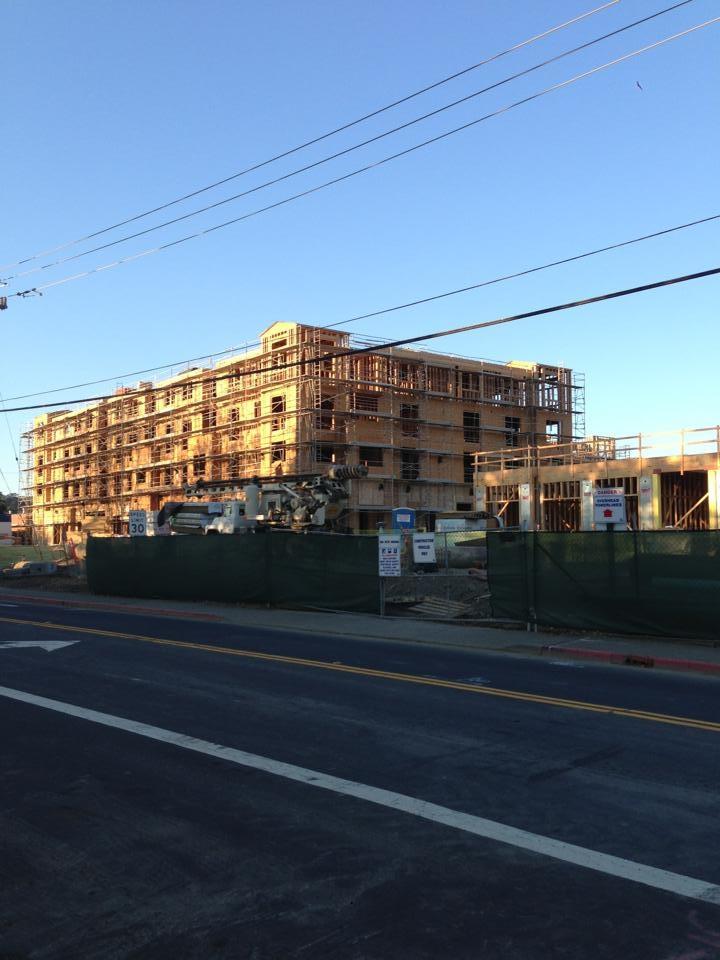This same problem applies to Northern
California and all of USA outside the largest eastern cities:
The LA Times decided to examine driving
habits at four apartment and condominium complexes that have
already been built at or near transit
stations in South Pasadena, North Hollywood, Pasadena and Hollywood.
Reporters spent two months interviewing residents, counting cars going
out of and into the buildings and counting pedestrians walking from the
projects to the nearby train stations.
The reporting showed that only a small fraction of
residents shunned their cars during morning rush hour. Most
people
said that even though they lived close to transit stations, the trains
weren't convenient enough, taking too long
to
arrive at destinations and lacking stops near
their workplaces. Many complained that they didn't feel
comfortable riding the MTA's crowded, often slow-moving buses from
transit terminals to their jobs.
Moreover, the attraction of shops and cafes that are often built into
developments at transit stations can actually draw
more cars to neighborhoods, putting an additional traffic burden
on areas that had been promised relief.
The problem -- reluctantly recognized by some of transit-based
development's most influential boosters -- is that public
transportation in Southern California is simply
not convenient enough: Either it takes too
long to get to places or,
more important, doesn't take people where they
want to go.
The region's transit system is limited, experts say, because it was
built on two assumptions that have since proved
untrue: that most traffic was generated by commuting trips and that most
people worked downtown.
Nowadays, people nationwide are driving so much to take their children
to school, run errands and engage in other
activities that these trips far outstrip commuting, according to federal
transportation statistics.
http://articles.latimes.com/2007/jun/30/local/me-transit30
|
|

Corte Madera Wincup
4 story development,
adjacent to the 101 freeway.
4.5-acre site at 195-205 Tamal Vista
Blvd.
MacFarlane Partners,
a San Francisco
real estate investment and development firm
to build a 180-unit apartment and retail
$68 million complex.
It will be interesting to see how many
residents dont walk to the Safeway and carry their shopping back and don't
take the bus or ferry or walk to school.
Corte Madera Mayor Alexandra Cock. We
created a new zoning overlay district to allow for 180 units at 40 units
per acre"
Cock sees these new apartments as appealing to local seniors, who might
want to sell their house and move into an apartment but want to stay in
Corte Madera.
10 percent of the apartments will be
designated for low-income residents,
TAM's
Corte Madera Freeway Interchange
needs about 20 feet of the WinCup property abutting Nellen Drive, But
Parking is planned for that part of the apartment complex.
TAM now needs to pay an estimated $15 million to $20 million extra in
eminent domain costs to buy and relocate the parking garage,
TAM: "All of our alternatives that we looked at going southbound affected
the WinCup property we've known for 7 years that we're going to affect
that property," "The town (of Corte Madera), who supported TAM's
Interchange has ignored us. What they approved has substantially
increased the cost of $15 to $20 million."
Wincup owner, MacFarlane says "we understand that at the end of the
day if TAM's project is approved ... that TAM has the power of eminent
domain and can condemn our property,"
Town Attorney Jeffrey Walter called TAM's project "a moving target" and
questioned why the agency didn't object in April 2011 when the Town
Council approved an updated housing element and a "mixed-used gateway
overlay" district zoning change that paved the way for the 180-unit
development.
"I'm not sure how we could tell the applicant to begin analyzing this TAM
project when we don't know what it is," Walter said. "If we were 15 years
from now, this may be a different story, but we operate in windows of
time. It's just not there yet it's got a long way to go before the
Interchange is going to be approved."
TAM had no problem with the WinCup project density approved in April 2011
just the current design, which uses land that TAM Freeway Interchange
needs. TAM needed to have bought that land before anything was built.
http://www.marinij.com/ci_19543685
|

